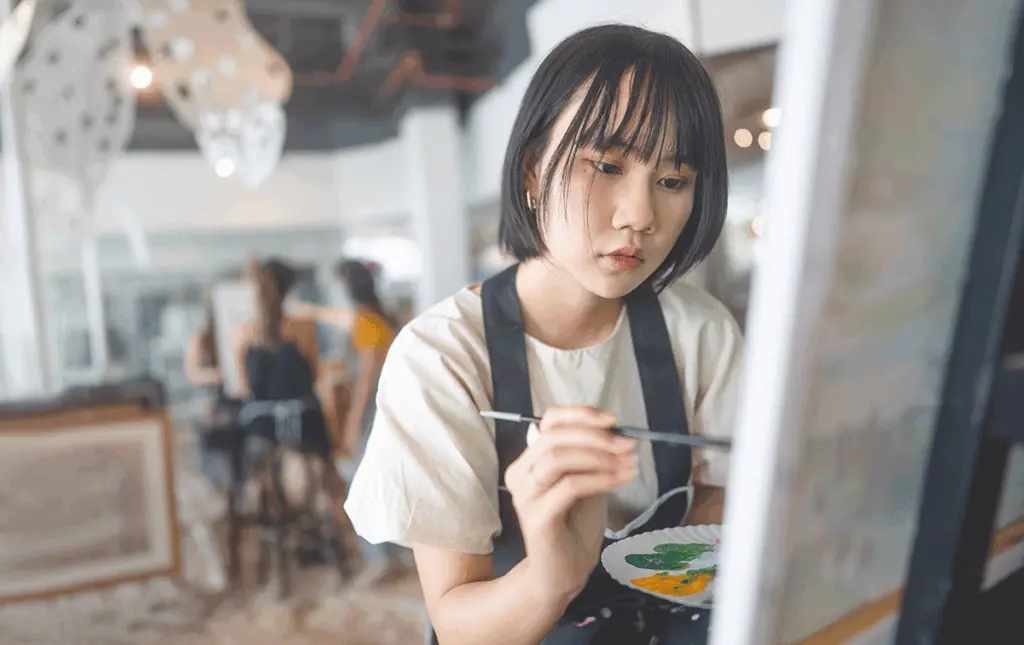Art therapy can be an effective and unique way to help people express themselves, explore emotions, and cope with various challenges. For teens in particular, who may struggle with finding their identity or navigating difficult transitions, art therapy can be a powerful tool for self-discovery and growth. At Massachusetts Center for Adolescent Wellness, we have more than a few art therapy ideas for teens to help them improve their mental health.
Contact us today to learn how our teen art therapy program can benefit your child.
What Is Art Therapy?
Art therapy is a therapeutic approach that utilizes creative expression to enhance mental health and overall well-being. It is frequently employed in conjunction with conventional therapy techniques and proves beneficial for a diverse array of mental health conditions such as anxiety, depression, trauma, and more. Art therapy encompasses various forms of creative expression, including drawing, painting, sculpting, and other artistic endeavors.
The Power of Art Therapy for Teens
The teenage years can be a tumultuous time filled with many challenges and changes. Adolescents may struggle to cope with pressure from peers, academic demands, family dynamics, and the physical and emotional changes of puberty. This can lead to feelings of confusion, isolation, low self-esteem, and other mental health issues.
Art therapy offers a safe and non-judgmental space for teens to express themselves freely without fear of criticism or failure. Through art-making, adolescents can explore complex emotions and thoughts that they may find difficult to express verbally. This process allows them to gain insight into their own experiences, enhance self-awareness, and develop healthy coping mechanisms
The Benefits of Art Therapy for Teens
Art therapy, similar to music therapy, can be especially beneficial for adolescents who struggle to express themselves verbally or have difficulty processing complex emotions. Here are some of the ways that art therapy can benefit teens:
- Encourages self-expression – Art therapy offers a safe and supportive environment for teens to express themselves creatively. This is especially beneficial for those who struggle to verbally articulate their emotions or experiences.
- Improves emotional regulation – Adolescents learn to effectively regulate their emotions by creating art. It allows them to process and express complex emotions in a healthy and constructive manner.
- Builds confidence and self-esteem – Teens gain a sense of mastery and accomplishment through art creation, boosting confidence and self-esteem. This is particularly important for those dealing with self-doubt or low self-worth.
- Develops coping skills – Art therapy equips teens with new coping mechanisms applicable to their daily lives. For instance, mindfulness or breathing exercises may teach them stress or anxiety management.
- Fosters social connection – Art therapy facilitates connections among teens with similar experiences or challenges. Group sessions create a supportive community where adolescents feel understood and accepted.
Art therapy offers a wide array of activities tailored to meet each teen’s unique needs. These activities not only stimulate creativity but also foster emotional growth, providing a safe platform for teens to explore and understand their emotions.
Art Therapy Ideas for Teens
Here are ten art therapy ideas that can help teens improve their mental health and well-being:
- Create a self-portrait – Encourage adolescents to create a self-portrait using any medium they choose. Teens will have a chance to reflect on their own identity and self-concept.
- Make a gratitude collage – Ask adolescents to create a collage that represents things they are grateful for in their lives. This can be a helpful way for teens to focus on the positive aspects of their lives and cultivate a sense of gratitude.
- Draw a mandala – Mandalas are geometric patterns often used in meditation and mindfulness practices. Teens can create their own mandala utilizing a variety of colors and shapes.
- Paint a landscape – Teens can paint a landscape that represents a place where they feel peaceful and calm.
- Create a vision board – A vision board visually represents a person’s goals and aspirations. Teens can create a vision board using images, words, and symbols representing their hopes and dreams for the future.
- Use clay to create sculptures – Working with clay can be a therapeutic and calming experience. Teens can use clay to create sculptures that represent their emotions or experiences.
- Make a memory box – Ask adolescents to decorate a box and fill it with objects representing essential memories or experiences. This can be a helpful way for teens to reflect on their past and process difficult emotions.
- Create a mandala using natural materials – Teens can create a mandala using natural materials, such as leaves, flowers, and stones. They will be able to feel connected with nature and engage in mindfulness practices.
- Use collage to express emotions – A collage is a versatile and expressive medium that can be used to represent complex emotions. Creating a collage can convey emotions such as anger, sadness, or joy.
- Paint to music – Playing music while painting can be an excellent way for adolescents to express themselves spontaneously and creatively. Encourage them to choose music that resonates with their emotions and see where their brushstrokes take them.
Remember, the journey of art therapy is unique for every adolescent, and there’s no ‘right’ or ‘wrong—the focus here is on expression and exploration, not perfection or artistic ability.
Call MCAW Today to Discover Our Art Therapy
Art therapy can be a powerful tool for teens. At the Massachusetts Center for Adolescent Wellness, help adolescents heal and grow through our comprehensive adolescent art therapy treatment. Our goal is to provide outstanding care and help adolescents to recover with care and compassion. For more information, fill out our contact form or send us a chat. We can help your child reach their full potential.




